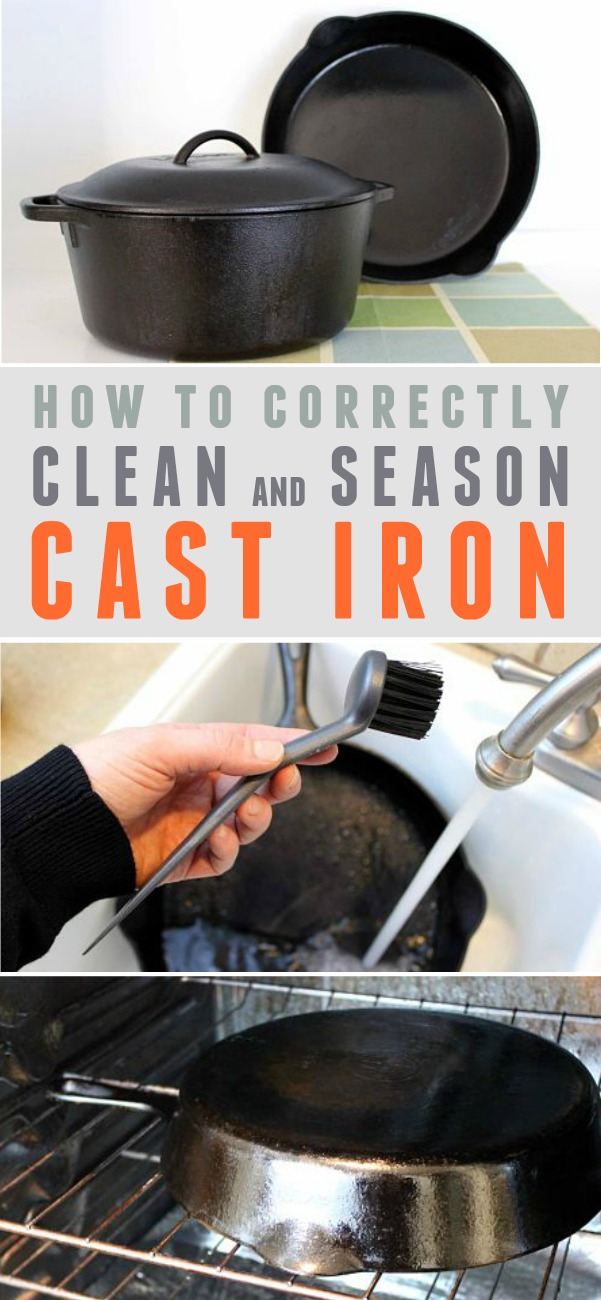
How to clean and season cast iron
I love my cast iron cookware. I am hoping to eventually replace all my pots and pans with cast iron options. My kitchen shelves might sag under the weight, but that is a small price to pay for true love.
I just read in The Lodge Cast Iron Cookbook: A Treasury of Timeless, Delicious Recipes (Amazon) that George Washington’s mother treasured her cast iron pots so much, they earned a place in her will. A woman after my own heart.
Anytime a good cast iron deal pops up, I can barely stand it. You know I have a serious weakness for Dutch ovens. There was this beautiful green enamel-coated Dutch oven that was calling my name on Black Friday. My husband seemed to think I was being ridiculous, “Seriously, you don’t need four Dutch ovens.” I tried to compare it to his power tool collection. No dice.
Then we hosted Christmas Eve at our house, and I baked two loaves of bread and had three pots of soup simmering at the same time. Proof that I could actually put five Dutch ovens to work at once. But that would just be crazy.
So, if you haven’t already fallen for cast iron, let’s check out some of the benefits. Then, for those of you who are still nervous that these are high maintenance pieces, we’ll go through some (easy!) care guidelines. Most of the seasoning and cleaning tips apply to true cast iron cookware, not the enamel-coated pieces. Finally, a few of my favorite cast iron options. Ready? Let’s do this.
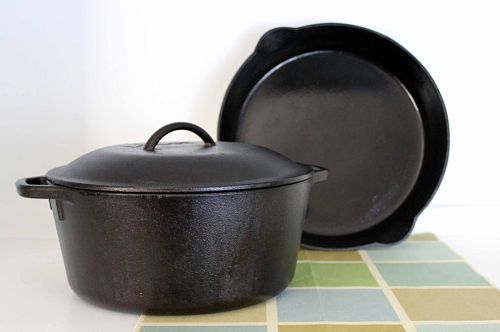
BENEFITS OF COOKING WITH CAST IRON
Cast iron cookware is reliable, durable, versatile, and economical. That’s an impressive list. For some, the biggest downside is the weight. They are hefty pieces, which I actually like, but that is definitely something to consider if you are not looking for a mild upper body workout while making dinner. Here are some more benefits with cast iron:
- Retains & distributes heat evenly
- Works well in the oven, on the stove top, and over a campfire
- When well-seasoned (not enamel-coated), the surface is naturally nonstick
- Handles extremely high heat
- Produces a dry heat (unlike Teflon) and can be used with very little liquid or fat
- Trace amounts of iron get absorbed into the food you cook
- Creates a crisp crust instead of causing food to “sweat” and toughen like most non-stick pans
- Improves with age as you are re-seasoning it with every use
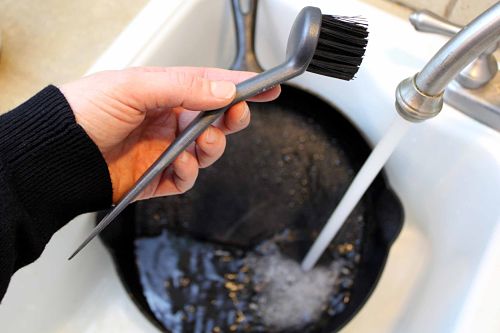
CLEANING CAST IRON
Cast iron is not fussy. Treat it right, and it will give you decades of dependable use. Your cast iron should always be washed by hand with a nonmetallic brush or scraper. I have read in several places that small amounts of mild dish soap is fine, but I never use soap on my regular cast iron (I do use soap on my enamel-coated pots).
- Scrub the pan clean with soap (optional), salt, or just hot water and a nonmetallic brush or scraper soon after use.
- Dry with a towel or place the wet pan on the stovetop over low heat; turn off as soon as it is dry. To prevent rust, don’t let cast iron air dry. When dry, rub 1-2 teaspoons of olive or vegetable oil around the surface with a paper towel to keep it from drying out (not necessary for enamel-coated pots or pans).
- Line with a paper towel and store in a dry place or just keep it in your oven.
- According to The Cast Iron Skillet Cookbook by Sharon Kramis and Julie Kramis Hearne (Amazon), if food begins to stick to your cast iron pan, just place it on the stovetop over high heat for 1-2 minutes. Remove it from the heat and sprinkle in 1/2 teaspoon of salt and 1 teaspoon of vegetable oil. Scrub the pan, wipe out any leftover salt, and let the pan cool. After it is completely cool, simply buff it with a clean rag.
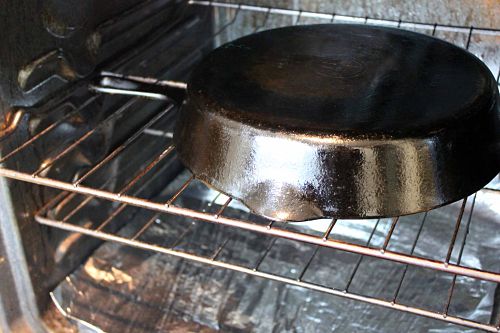
SEASONING CAST IRON
Many new cast iron pieces available today come pre-seasoned, meaning you can use them straight out of the box. Seasoning simply seals the porous cast iron to create a smooth surface and prevent rust.
Cast iron may need to be re-seasoned every now and then to retain that trademark shiny black non-stick surface. This method can be used for new, unseasoned cast iron or used cast iron that is dry and rusty (like a cheap garage sale find).
- Scrub pan thoroughly with a nonmetallic brush or scraper.
- Dry the pan and coat it with vegetable oil or shortening, inside and out.
- Place the pan, upside down, on a baking sheet or piece of foil (with the edges folded up) to catch any drips. Bake for 45 minutes – 1 hour at 350-degrees. The pan will smoke at first so turn on your oven fan!
- Turn off the heat and let the pan cool completely in the oven. Remove from the oven and wipe off any excess oil. If your cast iron pan is in really rough shape, you may need to repeat this process.
BASIC CAST IRON COOKWARE
These three pieces are produced by Lodge, and all are available on Amazon. I love everything I have read about Lodge, especially that they have a long family history (founded in 1896!) of making inexpensive, quality products here in the USA.
Amazon carries this 12″ cast iron Lodge Logic Pre-Seasoned Skillet and is such a versatile kitchen tool. Check out the awesome reviews (over 5,000 reviews and it still maintains a 4.5 star rating).
This 5-quart Lodge Logic Cast Iron Dutch Oven might not be as pretty as its enamel-coated siblings, but it works just as hard for half the price. It doesn’t happen often, but when the price drops around $25, add this baby to your cart, if you are in the market for a Dutch oven. You won’t find a better price on such a heavy-duty pot. The fact that it is made in the USA just sweetens the deal.
The Lodge Logic Pro Cast Iron Grill/Griddle is on my wish list. It is double-sided, perfect for grilling burgers on one side and making pancakes on the other (not at the same time, preferably). I could also see myself adding this to our camping gear, which would be a huge improvement on anything the state parks have to offer.
*******************************************
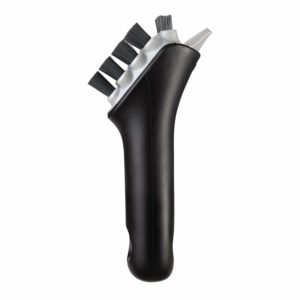
If you’re looking for a great non-metallic scrub brush to clean your cast iron, this Cast Iron Pan Brush from OXO gets AMAZING reviews. Has all different types and angles of scrubby surfaces, so perfect for flat or grooved pans.
Wondering what to make now that you’re convinced cast iron is awesome?
Find more delicious recipes on our Recipe Page!
Follow Frugal Living NW on Pinterest!
Fantastic range of boards from best recipes and tips for frugal living to gardening and budgeting help.
This post may contain affiliate links. See the disclosure policy for more information.
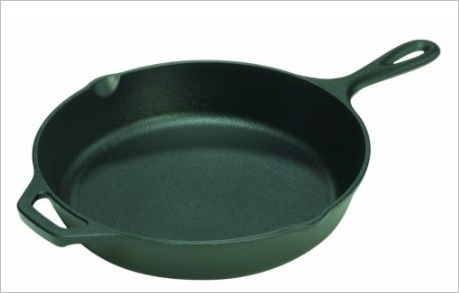
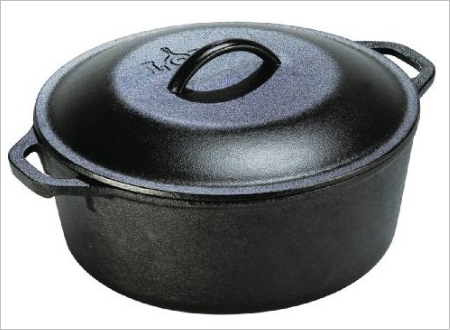
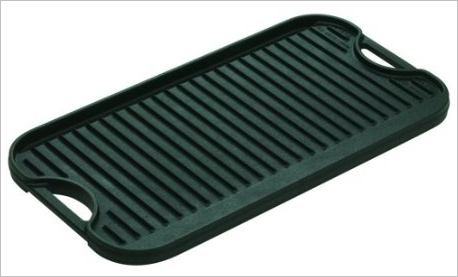

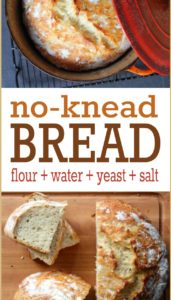

Hi there! Is there a reason you don’t recommend a chain mailer scrubber for cleaning cast iron?
Hi Angela ,
The way you describe the whole process is awesome. But, do you really suggest that dish soap is enough to clean out rusty elements from the cast iron.
As per my experience vinegar & baking soda paste/ tincture gave me most effective solution for rust removal.